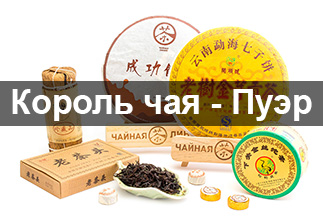-
10 Saturation
-
9 Aftertaste
-
8 Aroma
-
10 Effect
-
6 Balance
-
9 Body
When warmed up with your breath, you can catch a calm, velvety aroma with notes of almond and dried field herbs. The first infusion reveals the tea: a clean, balanced aroma, nutty-biscuit notes, a hint of damp wood.
The body of the tea is very thick and enveloping. The taste is sweetish, with light woody and biscuit shades and nuances of dry autumn leaves. By the 4th steeping, the woody shade begins to dominate, combined with notes of homemade cookies and walnut. A slight bitterness makes itself felt, complementing the taste palette. Shu Puer 2019 "Be the First" withstands 6 steepings, and is best revealed in a Yixing teapot and porcelain gaiwan.
The infusion is clear and transparent, deep, dark brown in color. The aftertaste is rich and long, with a predominance of woody-nutty nuances.
Shu Puer 2019 "Be the First" by the Tea Line brand has a strong, resonant tea effect. Depending on what a person needs at the moment, tea either drives away drowsiness, invigorates, relieves fatigue and encourages action, or helps to rest, relax and calm down, leaving the hustle and bustle behind.
High-quality tea from homogeneous raw materials, with a unique taste and strong tea effect, will be an excellent gift for a pu-erh lover for festive, ceremonial tea parties.
|
Country
|
China |
|
District
|
Xishuangbanna Dai Autonomous Prefecture |
|
Provinces
|
Yunnan (云南) |
|
Habitat
|
Ланьцан (澜沧, láncān) |
|
Manufacturer
|
ООО "Чайная Линия" |
|
Raw material production date
|
2018 |
|
Year of pressing
|
2019 |
|
Pressing form
|
Bing Cha (Cake Tea) |
|
Declared weight, g
|
357 |
|
Fermentation method
|
In heaps |
|
The tea is suitable
|
for evening tea (calming), for tea ceremony (ceremonial) |
- Reviews
- Vkontakte
Pu-erh is one of the most unique types of tea, which only gets better with age. Many people, when they first encounter this tea, wondered: why is pu-erh more often found in pressed form (cakes, bricks, tochas), and not in loose form? The reasons for this are related to both history and the practical aspects of storing and fermenting tea. Despite modern technologies that allow the production of loose pu-erh, the shape of pressed cakes remains unchanged. And pu-erh is more often found on sale in pressed form, for example, in the form of cakes or bricks, and loose pu-erh is less common. We will talk about the reasons for pressing pu-erh into cakes in this article.
Puer is a unique Chinese tea that is distinguished by its depth of taste, complexity of aromas and versatility of aftertaste. Its taste characteristics are formed under the influence of many factors, from growing conditions to the brewing method. Let's look at the main ones.
Over time, some consumers who are part of the country's "tea elite" discover mainland Chinese tea. And only a few get acquainted with Taiwanese varieties. The path of a tea person is usually long and thorny, but ultimately it leads to the King of Teas - puer. But not everyone is able to go all the way from ordinary teas to puer and appreciate its qualities.
The tea ceremony occupies a special place in the centuries-old Eastern tradition. And although the essence of this phenomenon remains constant, the nature and external manifestations of the tea ceremony in different nations have their own national characteristics. In each Chinese province, the tea ceremony and the tea used in it are varied: for example, residents of the southern provinces prefer green tea, and residents of the northern provinces - red tea, in Fujian province they more often use Oolong tea, and in Yunnan province Puer tea is widely known.




















































































